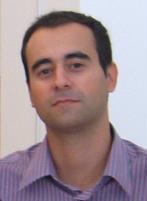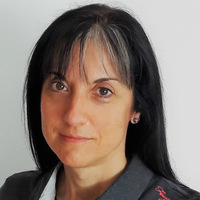Network Virtualization and Automation
Professors
Prerequisites:
Basics on IP dynamic routing protocols. IP addressing. IEEE 802.1D, 802.1Q.
Pedagogical objectives:
The goal of this course is to show how IP and Ethernet technologies recently converged in novel softwarized network environments, making use of data-plane programmability, network virtualization, cloud-native systems and automation frameworks.
Evaluation modalities:
Final written exam, assignments and/or Lab and/or project reports.
Description:
The core content of the course is related to acquiring the necessary skills about networking protocols supporting network virtualization practices with the recent evolutions related to software-defined networking, network function virtualization, and automation.
Topics:
- Network Virtualization: virtual bridging, data-center architecture, reliability and node-path redundancy, virtualization of network functions, network operating systems, cloud network overlay protocols, cloud quality of experience. NFV architecture, virtual network overlay protocols and software stacks.
- Orchestration and Automation : NFV orchestration, 5G slicing, virtual machine mobility, differences between automation and orchestration, automation from script-based management to autonomous networks and zero-touch management. Review of recent advances in standardization bodies and open source communities.
complementary content:
Necessary background in Internet routing and traffic engineering with the Border Gateway Protocol (BGP).
Background on the computation of network availability measures as a function of node, link and path redundancy strategies.
Study of network optimization models related to routing and forwarding problems studied during the core part.
- High availability: infrastructure planning, redundant systems, computing standards for availability and reliability.
- Internet routing: advanced Internet routing and network mapping protocols.
- Label switching, MPLS : history and principles of label switching, label distribution protocols, label stacking, and multi-layer generalizations.
- Traffic engineering: traffic engineering in link-state routing protocols, IP/MPLS traffic engineering and inter-domain extensions, centralized control plane.
- Ethernet carrier-grade : Ethernet evolution from shared Ethernet to switched Ethernet and Ethernet routing, Ethernet carrier grade extensions for metropolitan area and data-center networks.
- Network Optimization: revisiting studied routing and traffic engineering problems with mathematical programming, formulation and understanding of mixed integer linear programs.
• « Connection-oriented networks SONET/SDH, ATM, MPLS, and optical networks » -- Harry G. Perros • « Delivering Carrier Ethernet » -- A. Kasim. Edition McGraw-Hill. (chap. 1,2,4,13,14) • « Routing, Flow, and Capacity Design in Communication and Computer Networks » -- Michal Pioro, Deep Medhi, Elsevier Science&Tech. Books. 2004. • Téléinformatique: transport et traitement de l'information dans les réseaux et systèmes téléinformatiques et télématiques - chapitre »Sécurité des systèmes téléinformatiques" -- C. Macchi, J.-F. Guilbert. Dunot, 1987/91. • O. Bonaventure, Computer Networking: Principles, Protocols and Practice https://scm.info.ucl.ac.be/release/cnp3/Book/0.0/ • Marsch, Patrick. 5G system design : architectural and functional considerations and long term research. Hoboken, New Jersey: John Wiley & Sons, Inc, [2018]. ISBN 978-1-119-42512-0. • Chayapathi, Rajendra; Shah, Paresh; Farrukh Hassan, Syed. Network functions virtualization (NFV) with a touch of SDN. Boston: Addison-Wesley, [2017]. ISBN 9780134463056.
Devices:
- Laboratory-Based Course Structure
- Open-Source Software Requirements



